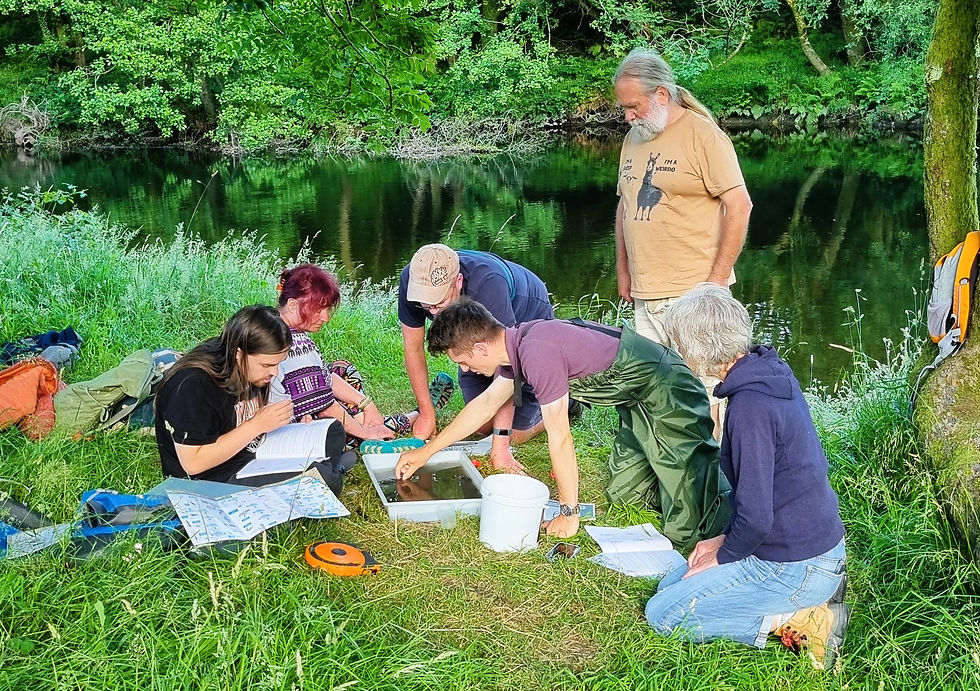Putting farming back into the centre of life
- dyfibiosphere
- Aug 21, 2024
- 3 min read
The main Biosphere project at the moment is Tyfu Dyfi, which is developing the local food system by increasing the supply of vegetables and fruit and building demand. Here, staff members Ann Owen and Robin Llewellyn reflect on progress. Darllenwch yn Gymraeg.

In the village of Darowen in Mid Wales, a quiet revolution is underway. Two farmers are growing field-scale vegetable crops for the local market, even though neither of them has any personal experience in doing so. With hands-on support from family, friends and other local people, fields were ploughed, and potatoes, brassicas and leeks planted.
Hill farmers have busy schedules, driven by the needs of lambing and shearing, and limited by the vagaries of the Welsh climate. Add the frequent weeding needed after a livestock farmer puts what has been pasture for fifty years back under the plough, and the problem of time and labour becomes acute.

But this year the community has stepped in, arriving on site with gardening gloves, hoes, and endless enthusiasm, excited to help keep the emerging crops free from the redshank, thistles, and other weeds that threatened to strangle them. Supporting the return to the diverse agriculture that once dominated this landscape, and boosting the local food economy provided its own reward, as did rekindling a personal connection with the soil. The generous lunch provided by the farmer for the workers only added to the feeling of positivity shared between all.
The extent to which this form of support can be scaled, or if there are other ways that transitional or locally focused agriculture can be assisted by the community, is an important question given the weight of work that farmers are under. As a UNESCO Biosphere Reserve, we can learn from the worldwide family of biosphere reserves that serve as ‘learning places for sustainable development’, and many of which have long-established social models of supporting agriculture during the pinch points of the farming year.
In the UNESCO Biosphere Reserve of Puracé, in Colombia, for example, the community assists with labour-intensive tasks for a handful of days during the year, whether that be inoculating cattle, clearing ditches, or fencing. Drawing on indigenous traditions, the custom is known as “minga” the word derived from the Q’echua “minka”, which is defined as “a meeting of friends and neighbours to work freely together,” or “to freely and collectively complete agricultural work in the common good”.

The custom has been widely adopted by neighbouring non-indigenous communities, who see how the sharing of such work, centred on a great collective meal, binds the community together and reestablishes a connection with the land. It can be seen as a wider-reaching cousin of the neighbourly support that often binds together households during lambing and shearing, and in seeing farming as essential to wellbeing it also shares elements with Community Supported Agriculture, or CSA.
CSA was developed around the idea that the community would support “their” farmer with tasks that needed extra hands, like field work, admin, marketing etc. In return, the farmer would grow the produce that their community wanted. There would usually be a financial commitment; members would buy a share of the harvest by paying a set, yearly fee, for which they would then receive a weekly share of whatever produce the farmer managed to grow. This meant financial security for the farmer and a sharing of the risks with the members of the CSA, be it famine or feast. Currently there are more than 200 traditional CSAs in the UK with many more adopting different interpretations of the model.
Wherever solutions fall on a scale running from informal, see-how-many-people-turn-up weeding days, to formal mechanisms that share work and reward, they are serving to oil the wheels of transition from monoculture to diverse farming methods.
At Tyfu Dyfi we are working to facilitate these experiments and to tell these stories. We are supporting a small number of brave Welsh farmers willing to try growing field scale vegetable crops. It’s a steep learning curve, but with help from the local community, farmers don’t have to make this journey by themselves, and know that once again, they are valued as the providers of the three meals per day we all like to eat.






Comments